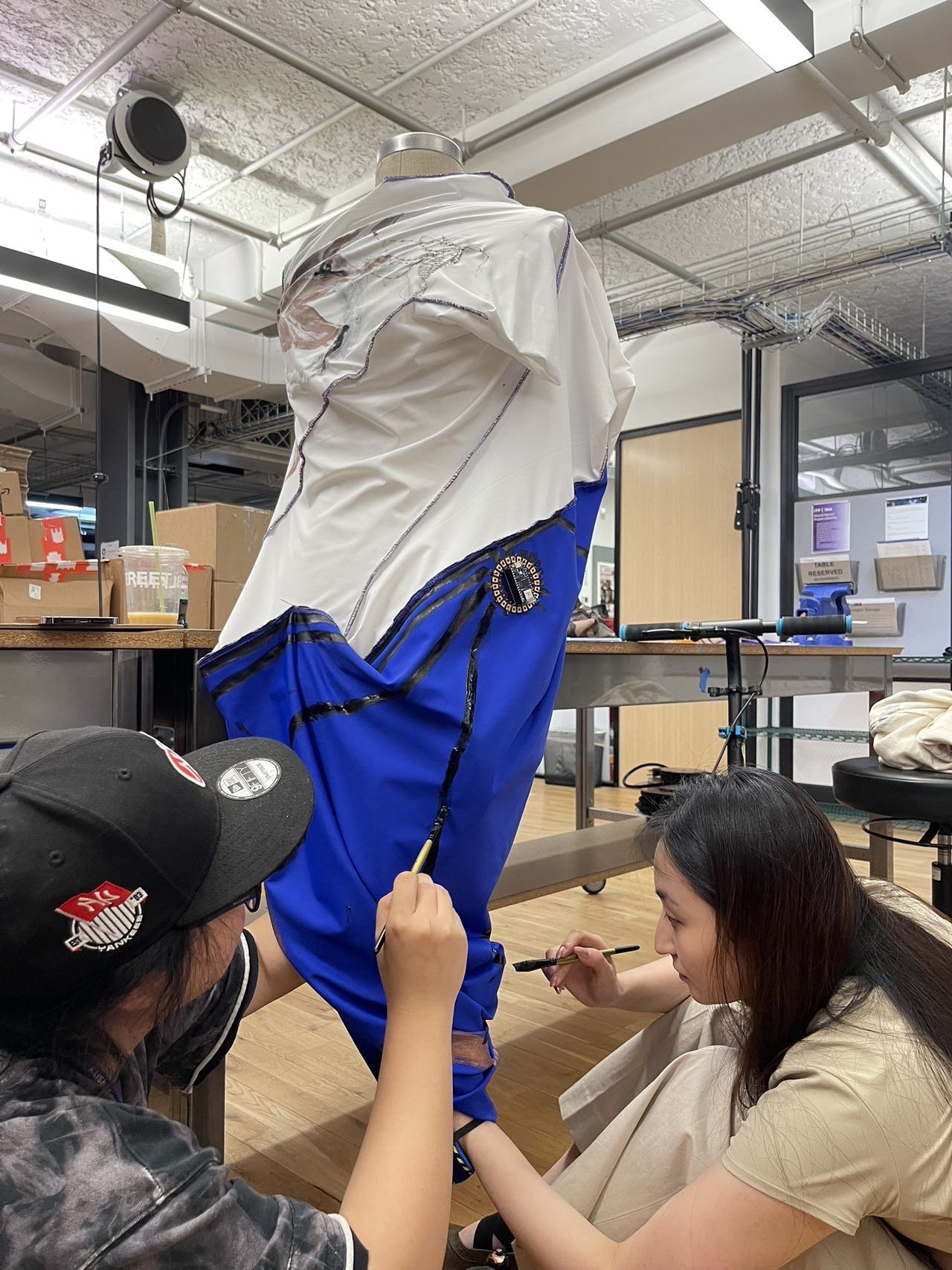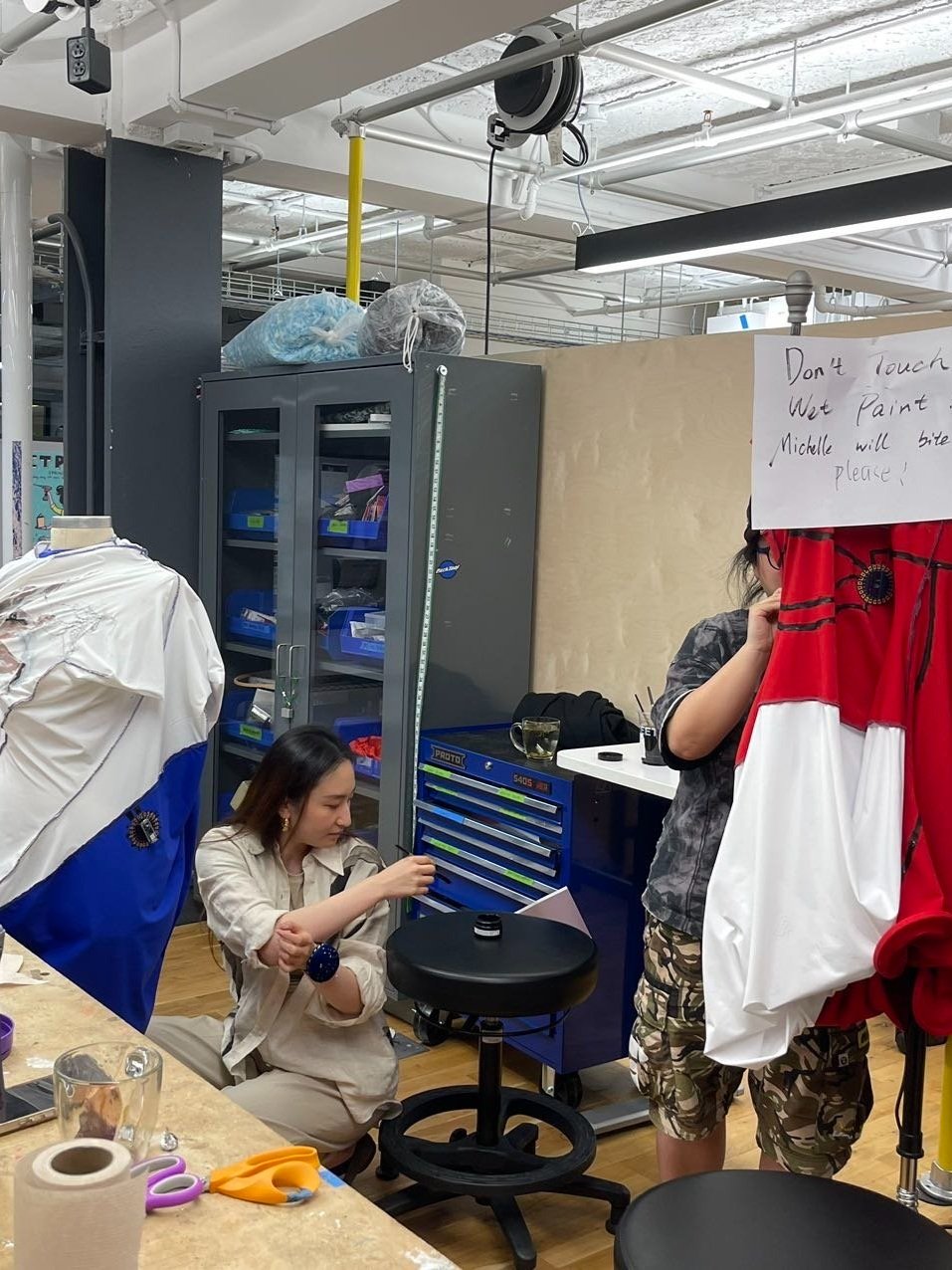Dan-Sco explores the innovative intersection of creative technology and fashion, investigating how wearable technology can transform the sensory experience of contemporary dance. The heart of this project is a pair of intricately designed dresses embedded with soft sensors, each capable of translating the dancers’ movement into unique musical compositions. Beyond its artistic implications, this approach also has potential applications in accessibility design, offering new ways for both disabled and non-disabled individuals to experience and participate in the performing arts. The harmonious fusion of fashion, technology, and inclusivity pushes the boundaries of how we perceive and interact with performance, where the fluidity of movement creates a symphony of sound.









Design Process
When we decided to create a project centered on soft sensors and e-textiles, I envisioned something playful and dynamic when worn. To give performers greater freedom to explore and interact with the tension of the spandex, I designed two unconventional silhouettes using subtraction pattern-making techniques. I transformed the 2D flat pockets, made from two 1.5-yard squares, into complex 3D and even 4D structures by draping. By incorporating whalebones into the garments, I ensured that the edges of the dresses remained stretched, enhancing their shape and movement.
Soft Sensor Experiment
In the experiment, we used conductive paint and hand-made embroidery to keep the elasticity of the fabric.
conductive thread embroidery
conductive paint






Due to the interconnected structure of the dresses, I came up with the idea of using extra stretchy panels to bridge the parallel circuit on the garment.
Musical Programming
Musician: Martin Xiaotian Zhang
Give each sensor either a digital input or analog input, to make each garment work like a symphony when the dancer stretches different parts of it.













